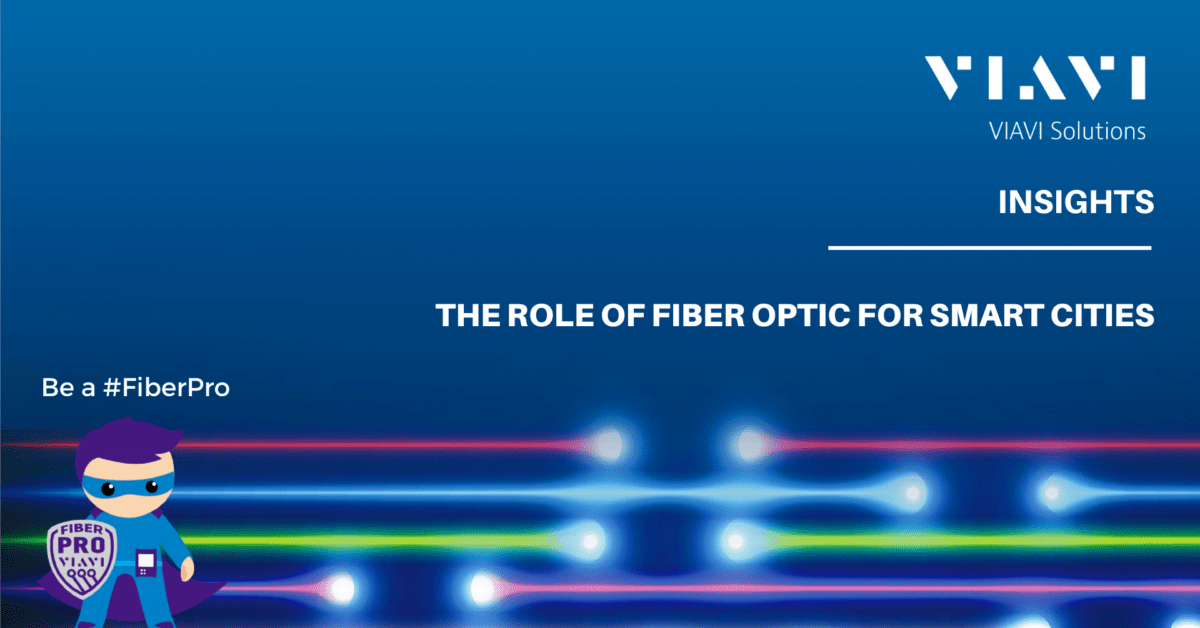All over the world, cities are rapidly turning into smart cities. From security to convenience to revenue generation, smart city applications will change the way cities operate and the way humans live and work. To develop and reinforce urban infrastructure, interconnected technologies hold an essential role in capturing, transferring, and translating data into meaningful material. Such technology is made possible by the high-speed fiber-optic networks, which support the communications infrastructure to transport an enormous amount of data from one end to the other.
Wide Range of Applications
Fiber-optic cable is ideal to accommodate today’s smart city applications as well as future technologies. The existence of fiber optic cables opened the opportunities to have ultra-broadband and low latency communication in cities as opposed to the traditional copper cable network, which had its own limitations. The high-bandwidth and low-latency characteristics of fiber facilitates numerous key applications in smart cities, including smart grids for enhanced energy efficiency, smart health examinations such as patient monitoring, sensor networks to improve public services, infrastructure usage and safety, smart mobility for optimizing traffic flows & improving road safety, and lastly city-wide network connections that are available to its residents and visitors.
Among these wide ranges of applications in smart cities that are supported by fiber, the three most prominent ones are:
Transportations
In smart cities, planners for transportation are working towards an intelligent transportation system starting with smart traffic lights to improve the flow of traffic. This will be developed in conjunction with high-resolution cameras to identify traffic types and manage the flow of cars, buses, public service vehicles, as well as bicycle traffic and pedestrians. The high-speed, ultra-reliable networks running on fiber will enable these cameras to upload the traffic conditions in a short amount of time, thus allowing the smart traffic lights to adjust their timing accordingly.
Urban Infrastructures
In addition, infrastructures that are connected to the IoT are able to autonomously perform pre-set actions, thus adjusting its activity based on real-world conditions. Smart street lighting, for instance, can automatically dim when the natural lighting is bright enough and consume less energy when not needed. Similarly, garbage cans may be able to alert waste-management when it is full so that garbage collectors can visit only the waste bins that need it, thus making their operations much more efficient, saving valuable time. Smart traffic signals and signs that are able to communicate with vehicles in order to assist in the movement of traffic and increase road safety. Such communication between public infrastructure and vehicles are considered essential to making self-driving cars a reality.
Public and Utilities Service
Much more efficient public services are also a part of the smart city plans. Fire and police communications, health services, as well as utilities – water, gas, and electricity – are looking into ways to be more efficient and cost-effective. A reliable high-speed network on fiber will enable a real-time communications infrastructure to handle natural disasters, which is especially important along coastal areas that are facing storms and rising ocean levels. Aside from those, fiber will also support the improvement of city services and air & water quality monitoring, as well as modernizing the infrastructure of utility services.
All of these applications are made possible due to fiber network’s future-proof and reliable connectivity, which makes it absolutely crucial for driving these innovations. It offers an extremely reliable, low latency communication with guaranteed availability. Additionally, a fiber network backbone is also essential for machine-to-machine communication where vast numbers of devices send short messages at irregular intervals – for instance, the smart traffic lights as mentioned above. This requires flexible, non-physical, low power, and low-cost connections that fiber provides. Without fiber, we simply wouldn’t be able to run the smart city applications that we want and need.
To realize the full potential and power of smart cities on a huge scale, cities require competent contractors who truly understand fiber optics, as well as continuous testing and maintenance so that the fiber optic networks can continuously support the various applications in smart cities. As fiber networks continue to expand, the development of standardized fiber testing practices becomes increasingly important. VIAVI Solutions is one of the leader in fiber testing, offering the most complete range of fiber test solutions. VIAVI’s umbrella of interactive tools, testing capabilities, and solutions will help you prepare for anything the future holds.
